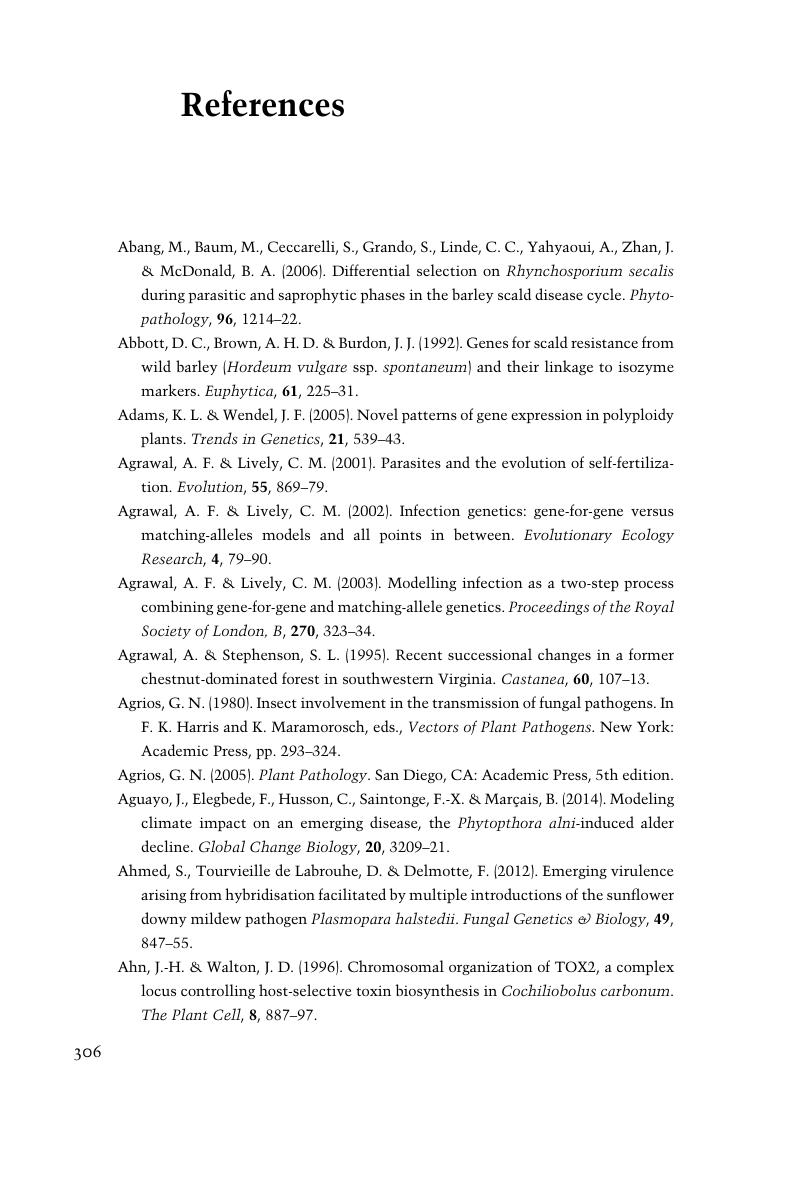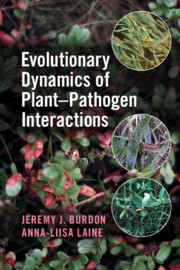Book contents
- Evolutionary Dynamics of Plant–Pathogen Interactions
- Evolutionary Dynamics of Plant–Pathogen Interactions
- Copyright page
- Contents
- Preface
- 1 The Diverse and Ubiquitous Nature of Pathogens
- 2 Environment as a Determinant of Pathogen Incidence, Abundance and Evolution
- 3 Genetics of Host Plant Resistance and Pathogen Infectivity and Aggressiveness
- 4 Sources and Patterns of Variation in Plant Pathogens
- 5 Demographic and Genetic Processes in Host and Pathogen Populations
- 6 Coevolutionary Dynamics in a Metapopulation Context
- 7 Coevolution and Host and Pathogen Life-Histories
- 8 Effect of Pathogens on Plant Community Dynamics
- 9 Future Developments
- Glossary
- References
- Index
- References
References
Published online by Cambridge University Press: 09 March 2019
- Evolutionary Dynamics of Plant–Pathogen Interactions
- Evolutionary Dynamics of Plant–Pathogen Interactions
- Copyright page
- Contents
- Preface
- 1 The Diverse and Ubiquitous Nature of Pathogens
- 2 Environment as a Determinant of Pathogen Incidence, Abundance and Evolution
- 3 Genetics of Host Plant Resistance and Pathogen Infectivity and Aggressiveness
- 4 Sources and Patterns of Variation in Plant Pathogens
- 5 Demographic and Genetic Processes in Host and Pathogen Populations
- 6 Coevolutionary Dynamics in a Metapopulation Context
- 7 Coevolution and Host and Pathogen Life-Histories
- 8 Effect of Pathogens on Plant Community Dynamics
- 9 Future Developments
- Glossary
- References
- Index
- References
Summary

- Type
- Chapter
- Information
- Evolutionary Dynamics of Plant-Pathogen Interactions , pp. 306 - 378Publisher: Cambridge University PressPrint publication year: 2019



